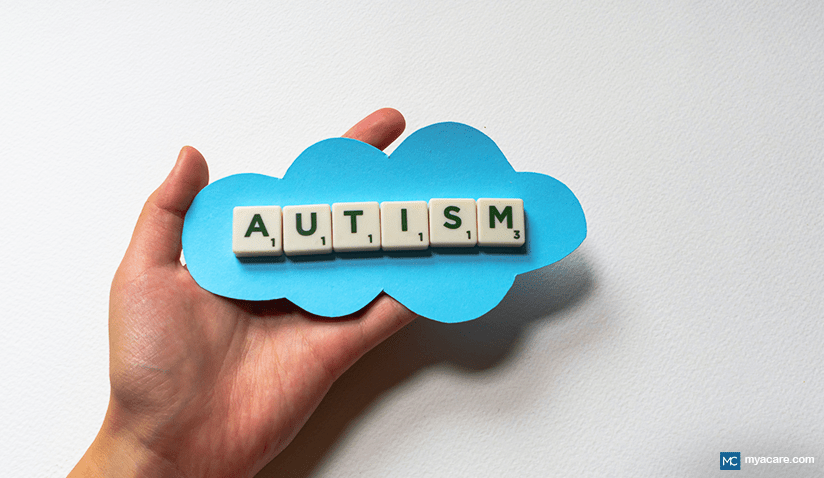AUTISM: COMMON CAUSES AND TREATMENT OPTIONS

According to the American Psychiatric Association, Autism spectrum disorder (ASD) is a complex developmental condition that involves persistent challenges in social interaction, speech and nonverbal communication, and restricted/repetitive behaviors. While an autism disorder can be diagnosed at any age, it typically comes to the attention of parents early in a child's life by the age of two. According to the World Health Organization, 1 in 160 children has an autism spectrum disorder.
Autism is a spectrum disorder, meaning its characteristics vary significantly from person to person. Some characteristics may include:
- Minimal or no eye contact.
- Difficulty with social interaction and carrying out a conversation.
- Difficulty with changes to routine.
- Repeated actions or body movements.
- Strong reactions to one or more of their five senses.
- Repeating phrases or words for no reason.
- Great ability in one area and great difficulty in another.
Causes of Autism
The CDC reports that genetic, biological and environmental factors are all believed to contribute to the development of AST at most researchers think that certain combinations of genes may predispose a child to autism as it generally runs in families.
In addition to this, if a pregnant woman is exposed to certain drugs or chemicals, the child may have a higher risk for autism. These risk factors include the use of alcohol, maternal metabolic conditions such as diabetes and obesity, and the use of antiseizure drugs during pregnancy.
Treatment and Management Options
Intervention can involve behavioral treatments, medicines or both. Many people with autism have additional medical conditions such as sleep disturbance, seizures, and gastrointestinal (GI) distress. Addressing these conditions can improve attention, learning and related behaviors.
Applied Behavior Analysis (ABA) is a treatment that focuses on helping a child develop positive behaviors while minimizing the negative ones. A variety of training addresses skill sets for different situations. For example, Pivotal Response Training (PRT) is designed to help motivate children so they want to communicate with others and learn. Discrete Trial Training is another type of treatment that employs the use of simple lessons and consistent reassurance through positive reinforcement.
Another unique type of ABA is the Developmental, Individual Differences, Relationship-Based Approach (DIR), otherwise known as Floortime. As the name suggests, Floortime involves playing with the child on the floor.
Early Intensive Behavioral (EIBI) and Verbal Behaviour Intervention (VBI)are two more ABA-type treatments. EIBI is designed for young children under the age of 5. VBI is designed to teach important verbal skills.
Occupational therapy teaches life skills so that children can become independent. Basic skills such as learning how to dress and bathe are the type of things this treatment offers. People skills are also taught so that children can better relate to other people.
WebMD explains TEACCH or Treatment and Related Communication-handicapped Children as a treatment using visual cues such as pictures designed to teach everyday skills. The way it works is to break the information taught into small steps to make it easier to understand.
There are also medications that can help manage symptoms such as insomnia, depression, problems focusing and seizures. WebMD reports that medicine works best when combined with behavioral therapies and good nutrition.
With the right treatment plan, individuals with autism can thrive. However, it is important to note that there is no standard treatment for Autism. Every individual with autism has unique strengths and challenges, so there is no one size fits all approach to autism treatment and intervention the plan should be tailored to address the person's specific needs.
To search for the best healthcare providers worldwide, please use the Mya Care search engine.
Sources:
- https://www.nimh.nih.gov/health/topics/autism-spectrum-disorders-asd/index.shtml
- https://www.cdc.gov/ncbddd/autism/research.html
- https://health.usnews.com/health-care/for-better/articles/2018-04-02/10-things-everyone-should-know-about-autism
- https://www.webmd.com/brain/autism/understanding-autism-treatment
- https://www.webmd.com/brain/autism/understanding-autism-treatment
- https://www.autismspeaks.org/treatments
- https://www.aboutkidshealth.ca/Article?contentid=1494&language=English
Disclaimer: Please note that Mya Care does not provide medical advice, diagnosis, or treatment. The information provided is not intended to replace the care or advice of a qualified health care professional. The views expressed are personal views of the author and do not necessarily reflect the opinion of Mya Care. Always consult your doctor for all diagnoses, treatments, and cures for any diseases or conditions, as well as before changing your health care regimen. Do not reproduce, copy, reformat, publish, distribute, upload, post, transmit, transfer in any manner or sell any of the materials in this blog without prior written permission from myacare.com.



